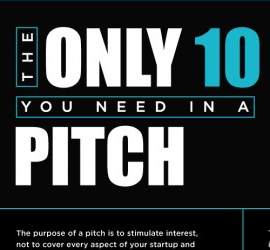What was the last time you went to a restaurant or a store and simply had to share your experience with a friend?
Well, that sort of organic communication can actually be a powerful boost for any business.
People often count on their social groups’ experience to judge anything around — in fact, some experts on the matter propose that gossip was an essential tool for cooperation in large communities back in Prehistory.
Now, we’re not exactly watching each others’ backs in a savage forest, but information has definitely held its value among us. When it comes to decision making, we use to count on each other’s knowledge about almost anything.
So, that’s what word of mouth marketing is all about — and companies have figured out the importance of it.
As one of the best practices for Digital Marketing, you shouldn’t ignore its benefits.
If you want to learn how to be in your audience mouth’s, check out what we will address:
Let’s start from the beginning!
What is word of mouth marketing?
Word of mouth marketing is basically making people spontaneously talk about your business. Communication is, in fact, the main goal. The real treasure of it is how the actions of our companies motivate people to do that.
One essential idea is providing a good experience. Remember when the first iPhone was released, and people got excited about unboxing it?
That was only part of Apple’s successful strategy, which still focuses mainly on customer experience.
The point is, after having the unique experience of buying and using the product, people quickly spread the news. In other words, customers are often doing marketing for companies, regardless of the reasons.
Still, the simple fact that we know that happens can work in our favor. A remarkable experience may trigger word of mouth marketing.
The product itself can be the source of it, such as good customer service, a free gift card, a Content Marketing channel, or even specific events promoted by the company.
Anything that positively connects a customer to your brand points in that direction.
You may trust the quality of your products and services will do that — but planning actions aiming at these goals is definitely necessary.
Social media adds an extra layer
If word of mouth marketing was useful before the digital transformation, it is now part of any company’s best practices.
The internet has created multiple ways of sharing experiences, which has even changed the way we deal with purchasing.
Consider the millennials, for example. We are talking about an entire generation that grew up with technology all around and information at a finger tap distance.
In that sense, word of mouth marketing is expanded to social media, where products are constantly being analyzed and reviewed in natural conversations.
Besides, Millennials and Gen Z are used to doing detailed online research on anything they are willing to buy.
No wonder that most companies have been investing huge amounts of budget on social media management to interact with people and respond to eventual bad reviews.
What are the benefits?
A first look will show that people are freely helping you increase your brand awareness, which 86% of B2B Marketers claim is their main goal, according to the CMI’s 2020 B2B Research. For B2C Marketers, the response rate was 84%.
The fact is customers tend to buy from companies they already know, so you must win that position. If you want your brand to be remembered in the decisive moment, the first action must be spreading its logo, ideas, values, culture, etc.
That’s one of the reasons why brand awareness is considered the first stage of the funnel: it paves the way for the next moves.
B2B marketing, for example, often relies on empathy-driven content, so they build a strong rapport with their audience.
Want to use that in your favor? In the following video, you can explore some insights given by April Henderson, Forrester Research’s consulting VP of market impact.
Qualified leads
By boosting word of mouth marketing — and, consequently, your brand awareness —, you generate more qualified leads in your other actions.
The point is, when customers keep your brand in mind, they are more open to hearing your message.
Nielsen’s study revealed that 92% of online customers tend to trust word of mouth marketing above any advertisement.
That is, people are so bombed with ads that they don’t give their trust for free.
Recommendations from family and friends come first, which means smart marketing strategies can create this sort of social proof.
Now, let’s talk about making the magic happen.
How to make it work properly?
Digital Marketing 101: connect rather than collect.
Now that we’ve passed the first wave of huge excitement about social media and everybody is well accustomed to it, just being online is not enough.
No doubt your company can benefit from having tens of thousands of followers — and that’s really healthy for the business. But actively triggering word of mouth marketing demands engagement.
So, first of all, you may consider investing in Content Marketing. Offer rich information, respond to people’s questions, induce them to comment on hot topics, etc.
Also, consider sharing your customers’ user-generated content so they feel strongly connected and carry the message forward.
That will help you create a sense of community and increase your pages’ traffic.
Incentivize sharing pics
Does your company have its own hashtags? It’s time to create them!
The users are familiar with that tool, so take advantage of it — including neutral hashtags that are already being spread. Both holidays and outstanding events may give you some ideas.
Moreover, encourage the audience to create and share pictures and videos on social media.
Even gifs and memes may make some noise. The trick here is offering some sort of rewards, such as discounts or free gifts.
Hashtags and visual media are very successful in fostering conversation and identifying your customers throughout the buzz.
Display reviews and testimonials
As we early mentioned, people pay much more attention to other customers’ experiences than to the ads. By showing reviews and testimonials on your website, social media, or blog, you use their voices to reassure the quality and performance of what you’re offering.
See, that’s why this is called social proof, and people feel more comfortable knowing they are not on a lonely journey.
An important takeaway here is that you should combine different media to increase the impact of your strategy.
Testimonials work pretty well in text, though videos could be even better. If you have an outstanding story to tell, it may be good material for a blog post as well.
Now, your digital profiles must be suited up! The design will impact as much as the messages, so make sure you promote the right vibe. Develop alternative, mobile-friendly versions of both the website and the blog.
Third-party reviews are also useful. They add an extra layer of credibility to your company’s reputation. Here’s what Julie’s Park Café & Hotel, in Wisconsin, shows on their website:

As you can see, they use Tripadvisor reviews to create social proof.
Use interactive content
The premise of interactive content is to engage the audience in the experience. More than just offering consumable content, it allows users to participate.
There are plenty of formats for that, such as images, videos, infographics, and calculators.
A study published by Content Marketing Institute shows that marketing campaigns used 63% more visual media in 2018 than in previous years. That said, we can take it a step further with advanced digital solutions.
Take a look at this interactive infographic created by Veracode. As you pass your mouse over it, extra information is shown.
The quizzes put our competitive nature to work and create scores to measure people’s knowledge; calculators, in turn, offer customized solutions to the users.
The list of interactive tools goes on, each of them with particular benefits. Here are some examples:
- ebooks;
- emails;
- mobile games;
- surveys and polls;
- webinars;
- apps;
- augmented reality media;
- flowcharts, troubleshooting tools, and diagnostic tests;
- interactive 360º videos.
It is important to allow users to share their experiences with friends, so make sure social media buttons are always around.
As you can see, human behavior itself can be used in your favor. Take advantage of word of mouth marketing and make sure you see the results unfold — that is, plan your strategy, and monitor the results. Sooner than you think, the payback will be visible in your brand value!
You can combine different strategies to increase your results. Check here 12 types of Digital Marketing and how you can use them!

![[ROCK NA] [EBOOK SEO] Complete Guide](https://rockcontent.com/wp-content/uploads/2024/06/banner_Search-Engine-Optimization.png)






